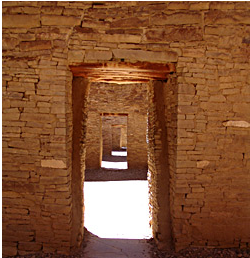Publication Date
5-1-2010
Abstract
The appearance of hybrid ceramics, also known as colono wares, signals Spanish contact across the Empire and materially represents syncretism between Native American and European traditions. Because colono wares are low-fired, locally produced ceramics that take on European shapes, they are used in this study to investigate how Pueblo groups in New Mexico responded to Spanish contact during the early colonial period, defined as initial contact to the Pueblo Revolt of 1680. I build a model that compares colono wares to traditional forms using technological variables to determine if cultural resilience, disruption, or innovation best characterize early colonial period interactions in the Southwest. Overall, the study demonstrates stability in the glaze-painted ceramic tradition in north-central New Mexico during the early colonial period. In fact, the most dramatic change in the glaze-painted ceramic tradition after contact is the adoption of new, Spanish-influenced vessel forms, with some subtle technological changes. The results are significant because they indicate that the early colonial period in New Mexico was characterized by Pueblo resilience and innovation, with little evidence for disruption by the Spaniards. Significant variability in colono wares across regions suggests that the Spaniards did not impose strict criteria on many aspects of colono ware manufacture. Regional and pueblo-specific variability in colono wares indicates that potters had the flexibility to experiment with these new vessel forms within a range of norms (or technological styles) specific to each pueblo/region or community of potters. Finally, it is clear that Pueblo potters manufactured glaze-painted colono wares, not Spaniards or other newcomers to New Mexico. This dissertation is the first systematic technological analysis of colono wares in the Southwest. This study shows that colono wares are an important artifact class, providing significant insight into the complexity of acculturation. Through cultural syncretism, Pueblo Indians responded creatively to European influences by adopting new vessel forms into their ceramic repertoire, without significant disruption to their traditions or loss of identity. Thus, early colonial New Mexico provides a striking counterpoint to Florida and the Caribbean where Native peoples were quickly decimated, with only small pockets of Native resilience. In sum, Pueblo potters were active players in the process of contact, innovating when manufacturing colono wares within the context of a relatively stable glaze-painted ceramic tradition.
Keywords
Pueblo, Ceramics, Colono, Colonial, Technological
Project Sponsors
A National Science Foundation Dissertation Improvement Grant (Grant No. 0530158), a Hibben Legacy Dissertation Scholarship, two Graduate Research Development Grants from the Graduate and Professional Student Association at the University of New Mexico, a Student Research Allocations Committee Grant from the Graduate and Professional Student Association at the University of New Mexico, the Anthropology Department at the University of New Mexico, and an American Fellowship from the American Association for University Women
Document Type
Dissertation
Language
English
Degree Name
Anthropology
Level of Degree
Doctoral
Department Name
Anthropology
First Committee Member (Chair)
Ann F. Ramenofsky
Second Committee Member
Patricia L. Crown
Third Committee Member
Edward Bedrick
Fourth Committee Member
Gary Smith
Fifth Committee Member
John W. Geissman
Recommended Citation
Dyer, Jennifer Boyd. "Colono Wares in the Western Spanish Borderlands: A Ceramic Technological Study." (2010). https://digitalrepository.unm.edu/anth_etds/19

